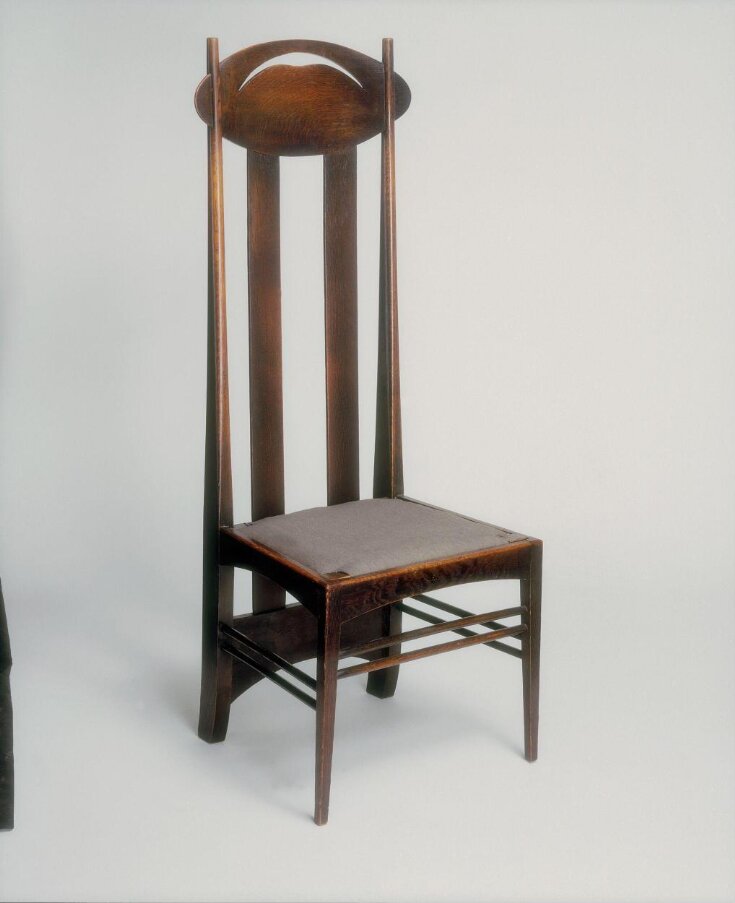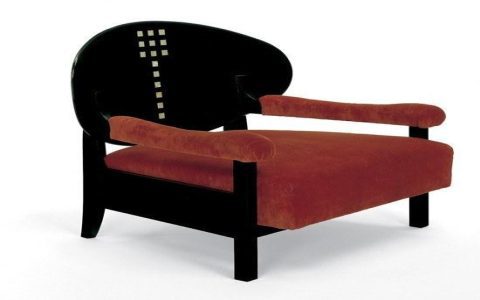Charles Rennie Mackintosh (1868-1928) was a Scottish architect, designer, water colourist and artist. His furniture designs, particularly his chairs, are celebrated for their distinctive Art Nouveau and proto-Modernist aesthetic, often characterized by strong geometric forms, attenuated proportions, and symbolic ornamentation.
Key Characteristics of Mackintosh Chairs
Mackintosh's chairs often deviate significantly from traditional forms, prioritizing artistic expression and integration within a specific interior scheme. Common features include:
- High Backs: Many of his chairs feature dramatically elongated backs, contributing to a sense of formality and architectural presence.
- Geometric Forms: Squares, rectangles, and grids are frequently employed, often softened by subtle curves or stylized organic motifs.
- Symbolic Decoration: Elements like the Mackintosh Rose, stylized plant forms, or abstract patterns are incorporated, often through carving, inlay, or leaded glass.
- Dark Stained Oak: Ebonized or dark-stained oak was a common material, providing a stark contrast to lighter upholstery or decorative elements.
- Integration with Interior: His chairs were conceived as integral parts of a complete interior design, rather than standalone pieces.
Notable Mackintosh Chair Designs
Several of Mackintosh's chair designs have achieved iconic status in the history of design.

Hill House Chair (1902-1903)
Designed for the master bedroom of Hill House, Helensburgh, this chair is arguably his most famous. It features an exceptionally tall, ladder-like back composed of slender vertical rails and horizontal crossbars, topped with a grid of small squares. The seat is typically upholstered. The Hill House chair is more sculptural than purely functional, intended as a visual accent within the room's white interior.
Argyle Chair (1897)
Created for Miss Cranston's Argyle Street Tea Rooms in Glasgow, the Argyle Chair also boasts a high back. Its defining feature is the stylized bird-in-flight or head-and-shoulders motif cut out of the oval headrest. This design demonstrates Mackintosh's early exploration of symbolic forms and his ability to blend organic and geometric elements.
Ingram Street Chair (1900)
Designed for the Ingram Street Tea Rooms, these chairs were also high-backed but featured a more complex interplay of pierced slats and solid panels. Different variations existed for different rooms, showcasing Mackintosh's attention to creating a holistic and varied experience within a single commission. The Ingram Street chairs often featured more elaborate pierced decoration than the Argyle Chair.
Willow Chair (1904)
The Willow Chair, or Willow Settle, was designed for the Salon de Luxe at the Willow Tea Rooms. It is a distinctive barrel-shaped chair with a high, gracefully curving back that forms a lattice pattern, evoking a stylized willow tree. This piece is a prime example of Mackintosh's ability to create furniture that is both functional and highly decorative, forming an almost architectural enclosure for the sitter.
Mackintosh's chair designs were radical for their time, challenging conventional notions of comfort and form. They remain influential, admired for their bold geometry, artistic integrity, and the seamless fusion of functionality with symbolic meaning.








